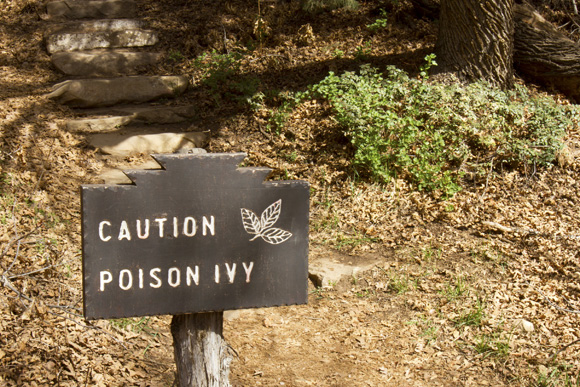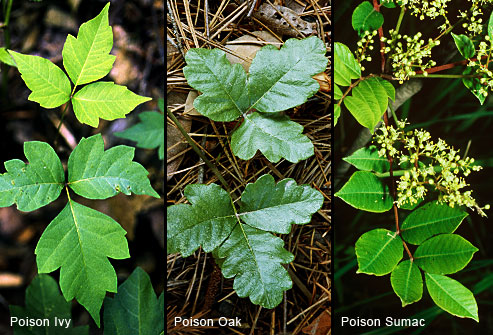
Poison ivy, poison oak, and poison sumac are all potential skin hazards when you’re spending time outdoors this summer. According to researchers these plants have become stronger and larger in recent years. A majority of people exposed to the oil that the plants produce will have an allergic reaction. This means that in order to avoid some serious discomfort this summer (and possibly something more damaging depending on the area affected) you should educate yourself on how to avoid these plants and how to treat the rashes they produce.
Oil produced by poison ivy is the cause of the rash it produces. The skin can be affected not only through direct contact with a plant but also through contact with clothes, pets, or anything else that has the plant’s oil on it. Your dog will likely not get a rash from exposure but they could spread the plant’s oil to you. If you are aware that you touched a poisonous plant, rinsing the skin thoroughly with lukewarm water can help remove much of harmful oil. Always avoid scratching or picking the affected area! This is one major way to worsen many skin problems. If the skin starts to blister or the rash spreads you should schedule and appointment with a dermatologist.
Here are descriptions of three different kinds of plants that cause rashes. Look at the pictures above of these plants so you know what to look out for. Also check out the video below to learn about what is happening in your skin when you are exposed to the oil these plants produce.
- Poison ivy has three leaves arranged left, right and center; it has shiny leaves with smooth edges
- Poison oak is similar in appearance to poison ivy, with a polished, hairy surface; it is typically in a group of three, five or seven leaves
- Poison sumac grows in groups ranging between seven to thirteen leaves, with one leaf at the end.

